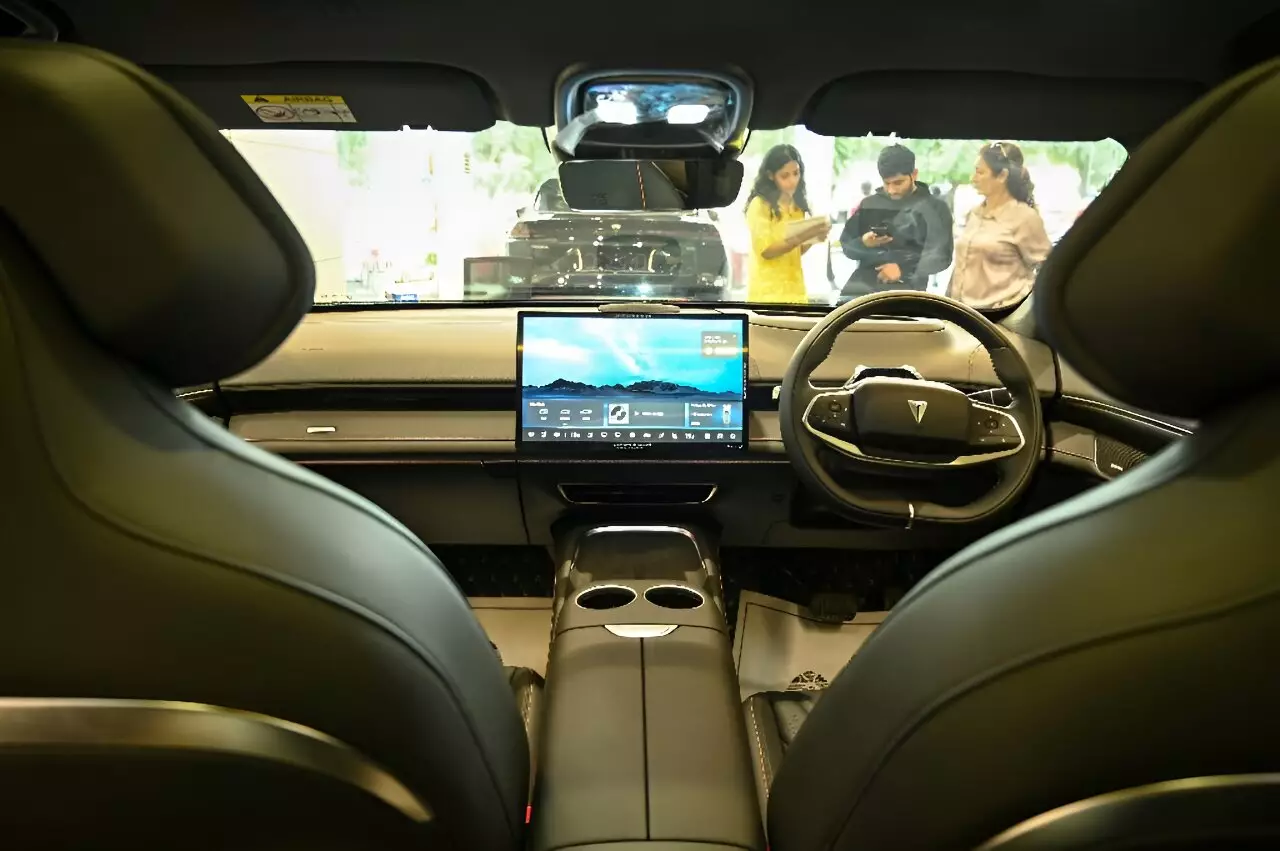In just a decade, Nepal’s transportation landscape has undergone a remarkable transformation, shifting from a reliance on petroleum-fueled vehicles to electric alternatives. This shift, exemplified by taxi driver Surendra Parajuli and his recent purchase of a battery-powered BYD Atto 3, illustrates a broader trend fueled by advances in renewable energy. Previously, the notion of switching to electric vehicles (EVs) in a country plagued by chronic power shortages seemed far-fetched. However, a rapid expansion of hydropower infrastructure has not only made energy more accessible but also affordable, encouraging the adoption of electrified transport solutions across the nation.
Parajuli’s personal testimony highlights the financial advantages of using an electric cab. He reports significant cost savings, noting that his EV can travel up to 300 kilometers on a single charge, costing him merely a fraction of what he previously spent on petrol. This shift aligns with a growing movement in Kathmandu, where overcrowded, aging vehicles are making way for cleaner, greener options. As of the latest figures, over 40,000 electric vehicles populate Nepal’s roads—an encouraging yet small fraction of the total 6.2 million vehicles.
The surge in EV popularity is evident, particularly in the face of escalating demand. An astonishing 25% of the electric vehicles in Nepal were imported within just one year, representing a nearly threefold increase from the previous period. Much of this growth can be attributed to the influx of Chinese manufacturers dominating the international electric vehicle market. Domestic consumers are now seizing the opportunity for cleaner transportation, moving away from the former dependency on traditional fossil fuels that previously dictated their transport choices.
This newfound independence has been recognized not just by individual drivers but also by broader society. As Yajya Raj Bhatt expressed at an electric vehicle motor show, owning an EV translates into a sense of autonomy. The progress in electricity generation—a remarkable fourfold increase in output from hydropower over the last eight years—has made this shift feasible for the populace. With nearly 95% of Nepalis now having access to electricity, the context for adopting EVs has never been more advantageous.
Impact on the Economy and Environment
The economic implications of this transition cannot be understated. Previously reliant on expensive imports from India for fossil fuels, the potential for Nepal to leverage its hydroelectric resources not only alleviates strain on individual budgets but also boosts the national economy. Estimates suggest that the introduction of electric vehicles has saved the country approximately $224 million in fuel costs, creating an opportunity to redirect efforts toward advancing sustainability.
Moreover, electric vehicles remain a critical part of Nepal’s strategy to tackle air pollution and greenhouse gas emissions. With road transport contributing to over 5% of greenhouse gas emissions, reducing petrol-powered vehicles will be paramount in combating the deteriorating air quality in cities like Kathmandu. The government is optimistic in its goal to have 90% of private vehicle purchases be electric by the decade’s end, furthering its ambition of achieving net-zero emissions by 2045.
Despite these positive developments, the rapid embrace of electric vehicles has raised red flags among environmental activists. Critics argue that while electrification of transport is a step forward, it should not come at the expense of ecological integrity. The government’s push to enhance hydropower capacity—expanding its current generation from 3,200 megawatts to a projected 30,000 megawatts—has incited concern. Trade-offs exist when it comes to constructing new dams in ecologically sensitive zones, leading to fears of habitat destruction.
Furthermore, while electric vehicles generate less pollution during operation, their environmental impact does not disappear entirely. The challenge of managing electronic waste, particularly used lithium-ion batteries, poses a significant hurdle. Disposal of these batteries is expensive and those managing the waste express concerns about the long-term consequences if the government fails to implement robust recycling initiatives. Environmental entrepreneur Nabin Bikash Maharjan stresses the urgency of addressing electronic waste, warning that the focus on immediate solutions may overlook the broader, more damaging repercussions.
Nepal’s electric vehicle revolution stands at a crucial crossroads, balancing economic opportunity against environmental responsibility. While the transition to electric vehicles heralds a greener mode of transportation and economic savings, it necessitates conscientious planning for sustainability—not just in the realm of transportation but also concerning energy production and waste management. For the country to truly thrive in this new era of mobility, the focus must extend beyond short-term gains to address systemic environmental challenges. By forging a path that embraces sustainable innovation, Nepal can serve as a model for similar nations, demonstrating that progress need not come at the cost of ecological integrity.


Leave a Reply